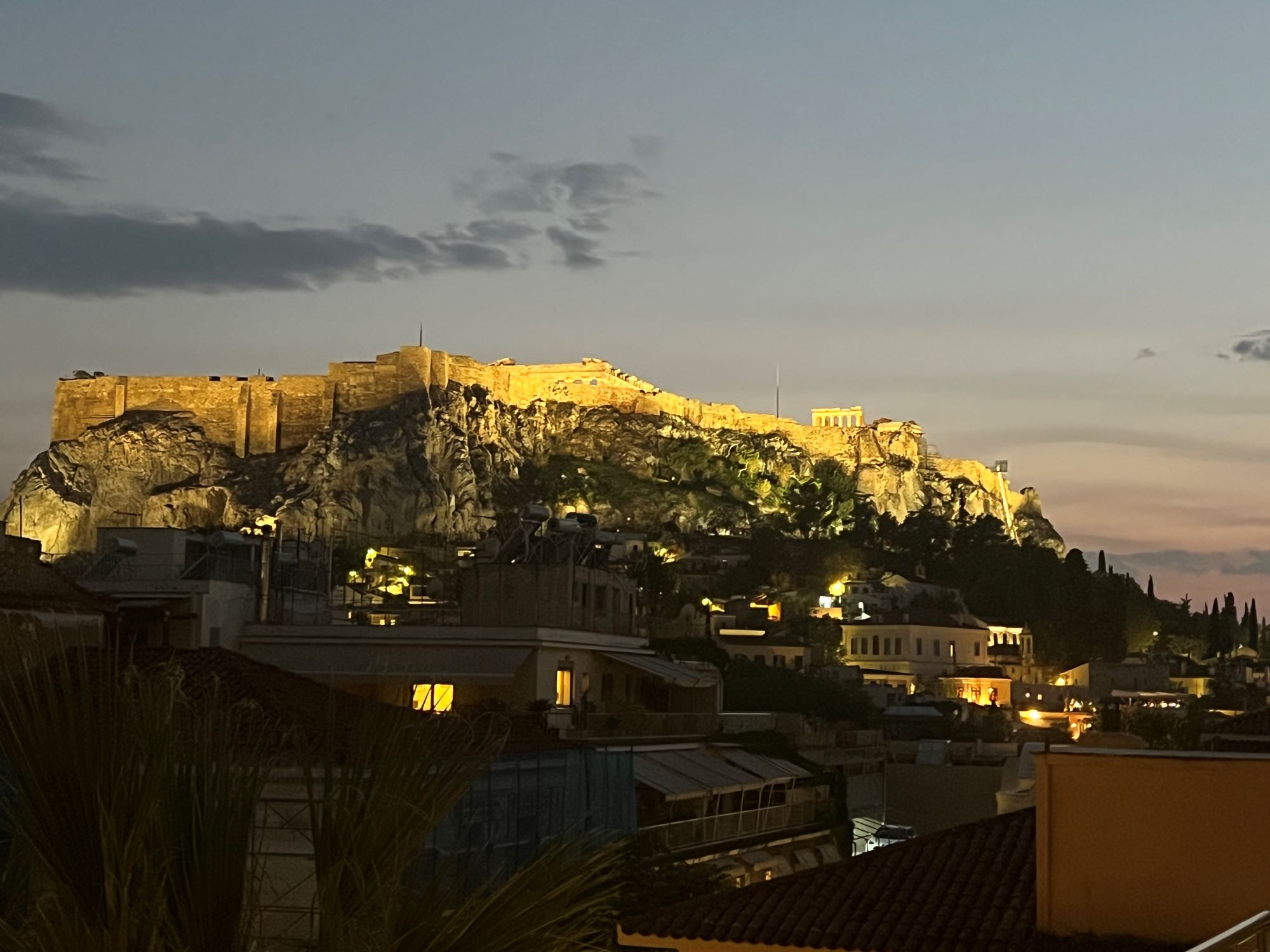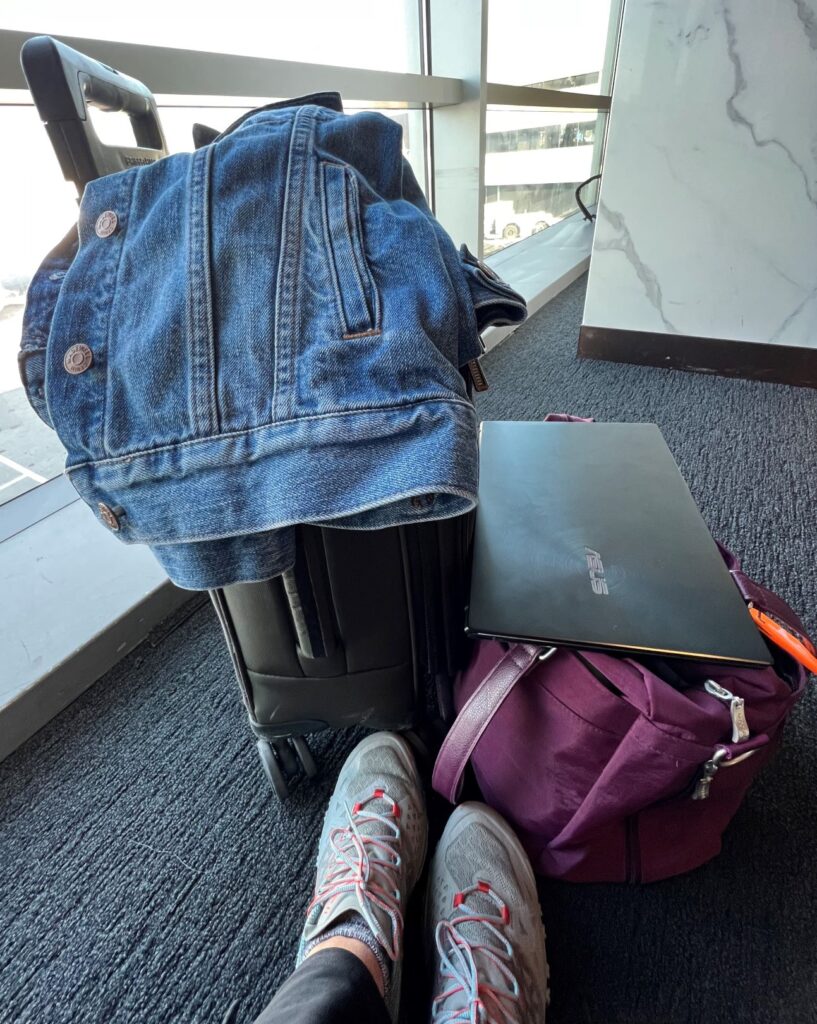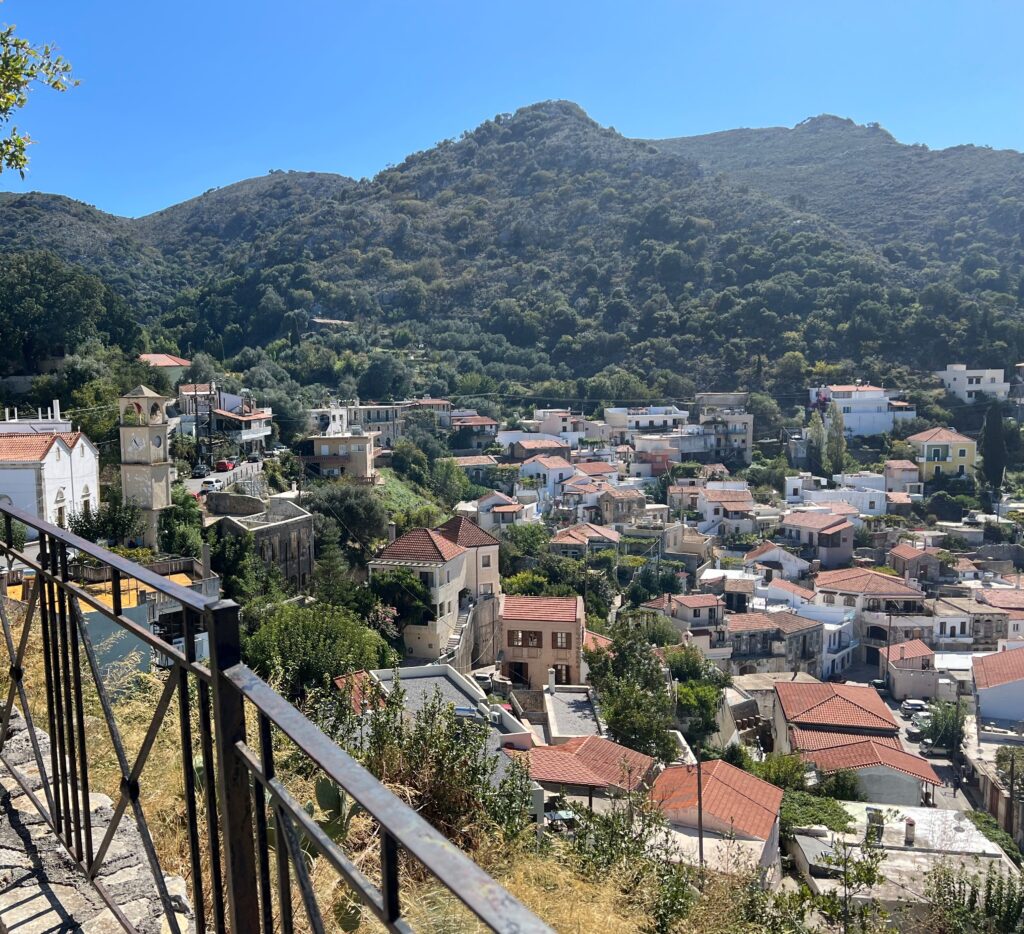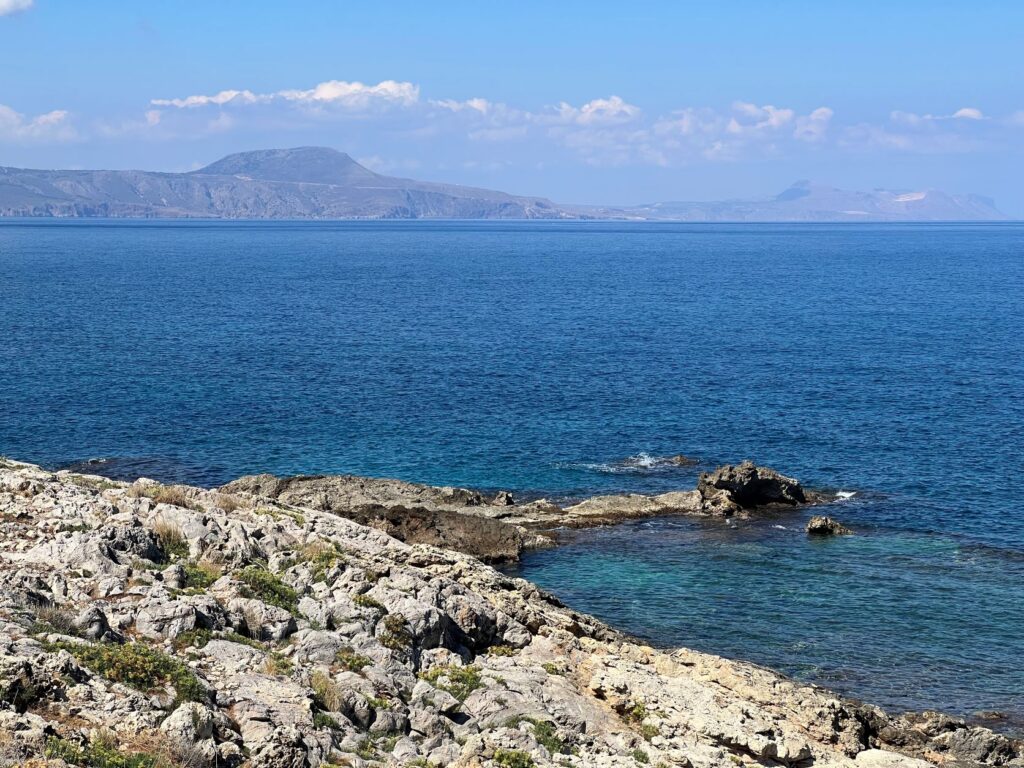For my 36 hours in Athens, climbing to the summit of the Acropolis Hill to visit the Parthenon is no easy task, despite what the tour guides say, but definitely a vital adventure in your lifelong checklist. I counted well over 7,000 steps on my roundtrip from my hotel to the top of the Acropolis and easily one-third of them were steps going up to the historical site. Definitely make the trek if you are able, and if wary, pack collapsible aluminum walking sticks into your luggage.
My trip to Athens was a purposeful detour en route to a longer trip in Istanbul and southwestern Turkey. Friends had encouraged me to make the brief stop to see the Acropolis, Parthenon temple and Athens’ ancient world wonders, which were already on my to-do list. Late in life I’ve been fascinated by ruins – in this case, stalwart remnants from 2,500 years ago.
It’s mesmerizing to think of the advanced “technology” and craftsmanship back then. The amount of marble in the columns, arches and steps is breathtaking. Imagine how laborers trekked 17 kilometers for 5-6 hours each way from the nearest marble quarry! The Greeks were innovators in multiple facets of society, including the originators of democracy – yet unfortunately for the workers hadn’t yet come across elevators.
Acropolis – Past and Future
Dominating the Athens skyline, the Acropolis Hill is just over 500 feet above the city basin; climbing up is a mid-range level of difficulty. There are some steep angles, narrow steps and challenging footing on worn marble, mostly without handrails. The crowds add to the level of effort but you can move at your own pace and it’s manageable.
Today’s Acropolis Hill reaches backwards and forwards. Up top in one corner on the flat Acropolis plain, a makeshift stone-cutting factory is performing the craftsmanship necessary to rebuild the Parthenon’s ceiling. Workers with “Dionysso Marble” on their T-shirts climb modern scaffolding to recreate the top of the temple, which was blown off in a war between Venice and the Ottoman Empire during its occupation of Greece in 1687. It will take another 20 years to complete the task.
Some quick history – Akro (height) + polis (city) combine for the name of the bluff (“high city”) on which the Parthenon and other temple remains stand. Strong fortification walls have stood around the hill for 3,300 years, and, in the 8th century BC, the Acropolis had acquired its religious character as a monument to the cult of Athena, the city’s patron goddess of Greek mythology. Empowered by their victory over the Persians in the second half of the 5th century BC, the Greeks began construction of the monuments to thought and art along the flat top.
The Hill
Our tour guide was animated and full of colorful anecdotes. The “skip the line” service offered online by “Get Your Guide” was easy to book and work with service, even with a last-minute change managed by a very responsive chat that clearly had a person at the other end. We had a strong breeze at the summit but it can be deadly hot up there; in fact in the summer’s overly hot climate this year, the Acropolis closed for several days. If you have a choice, skip the summer.
From my room in the Electra Palace Hotel, I had a clear view of the Acropolis, which rises nearly 500 feet above sea level. To open the curtains and see the rocky fortress when I woke up, as the sun highlighted the angular lines, was a morning I won’t forget. From this reasonably priced and convenient upscale hotel in Plaka, I could see the rim of the top of the Parthenon. Its eight front columns form a V-shape corner from one angle; along the north side, I caught a glimpse of the elegant Temple of Erechtheion, also erected for Athena.
Athen’s Plaka District
I love the sounds of European cities in the morning – church bells on the hour, the irritating mopeds, laughter of children in a schoolyard down the block, the dull clatter of set-ups in the restaurant courtyard below. Then comes a second set of church bells, more distant. Coffee aromas are in the air.
I am so glad I found the Electra Palace online, because it is the ideal spot, a quiet luxury hotel in the heart of Plaka, the old city, along its narrow back streets and with breathtaking Acropolis vistas, especially at night from the 8th floor roof restaurant and bar. From there, with a glass of wine, dinner or breakfast, you can have yearly a 360-degree view of Athens, a sprawling city marked by four hills around the horizon line’s circumference. The room amenities are “eau de magnolia” scented and the front desk and concierge services very helpful. When I had difficulty finding the driver of my airport transport upon arrival, I called the hotel and they immediately were on it. It was a huge relief, after a 9-plus hour flight without much sleep, attempting to navigate via international cell phone conventions and in a country where English is not the first language.
The Plaka’s twisting narrow streets are often jammed with tourists, small cars and scooters, but like other parts of Europe, leaving the main drag with the tourist shops leads to colorful glimpses of daily life, small ruins to stumble upon. You’ll find an array of animated tavernas and coffee shops where visitors can spend hours with dependably cheerful service and excellent Greek and European cuisine. You’ll need sturdy shoes for the cobblestones and pavers, and for the tours to the ancient ruins, very reliable flat shoes to climb over boulders, manage uneven and slippery steps (granite) and traipse across gravel. While Greek fashion is upscale, the hottest shoes are trendy sneakers.
I try to dine where the locals go but sometimes that formula stretches to “popular with tourists” or “recommended by hotels.” For dinner the first night, after spending 10 minutes inside the Holy Metropolitan Church of the Annunciation of the Virgin Mary, known as the Metropolis, the Greco-Byzantine and neoclassical cathedral church of the Archbishopric of Athens and all of Greece, I followed the hotel’s advice. That meant the covered outdoor garden of Old Ithaki around the side of the church. I ordered several appetizers as my dinner – halloumi (salty grilled cheese that is a mixture of goat’s and sheep’s milks), Greek olives tossed with olive oil and thyme, two small grilled octopus tenacles with a fava bean spread and rice and dolmades (grape leaves stuffy with an herby rice), accompanied by a glass of local rose wine, which was dry with a slight fruit and yummy. I should have stuck with two choices – there was so much food! (I am a sucker for Greek cheeses and already had a small plate of leftovers from my afternoon snack.) The balmy evening was even more enchanting with the bouzouki-keyboard duo who played traditional tunes that are the backdrop of Greek life and we recognize from films like “Zorba the Greek.”
Women are constantly warned to keep our personal items (e.g., pocketbook) close because the crowded streets and throngs of tour groups make pickpockets easier; I honored their suggestions but had no difficulties nor sensed any miscreants hovering. I was a little concerned walking back to the hotel alone through the dark twisting streets, yet also found that fear to be unnecessary. The walk was about 5-7 minutes and there were plenty of people strolling about during the evening hours, when dinners often go quite late.
The Local Taverna
On the second night of my 36 hours, I walked up the block from the hotel to Eugenia (Evgenia in Greek), a traditional family-run taverna recommended by one of the servers at the hotel. As predicted, the food was over the moon, the setting completely unpretentious and the service a bit checkered. From the extensive and authentic classic taverna-style menu, what was available that evening was marked with extremely reasonable prices compared to the touristy draws down the block – all very fresh and very homemade. The grilled whole sea bream (known also as dorade, a sweet white Mediterranean fish), and the baked feta with tomatoes and green peppers were the best I’ve ever had. (You’ve not had feta until you’ve had it in Greece, despite what the grocery story packages in the U.S. claim.) With two glasses of local wine, my entire check grew to 31 euros. They don’t have a website but you’ll find them here – Voulis 44A, Athina 105 58, telephone: 21-0321-4121. No wonder they’ve been drawing locals and tourists since 1989, and as one of the reviewers said, let them pick your dishes as the servers know what’s best that night.
Getting Around in Athens
Greece and Athens make travel here very easy. English is a second language required in school from Kindergarten, so there is little difficulty asking and receiving directions and information.
Getting to the Plaka district from the Athens International Airport takes about 45 minutes by car; however, my trip was frustratingly longer for my driver because of the Race for the Cure fundraiser blocking many streets in the city center on this first day of October. As a sidebar, and as a breast cancer survivor, I was secretly thrilled to see the bright pink T shirts and throngs of people streaming through the streets in recognition of the global support for the annual Breast Cancer Awareness month.
Vibrant art, theater, food and colors are plentiful and the people warm and welcoming. Music is everywhere, often romantic or mournful. If you’re lucky, you’ll be there when a concert or dramatic series is playing in one of the open theaters or forums from ancient Greek times, such as those at the foot of the Acropolis. Shopping in the Plaka is tourist focused but I did find a stylish Greek fashion icon, Semiology, where I just had to buy something contemporary and memorable.
Over my 36 hours in Athens, I practiced the few Greek words I learned in Crete last year – kalimera (hello) or yasas (more formal hello), efharisto (thank you), parakalo and yamas (cheers) and kalispera (good evening). Though an apologetically minimal effort, the locals always appreciate that. Even from the gruffy ones you get a smile.
So for now, efharisto – until the next time!




